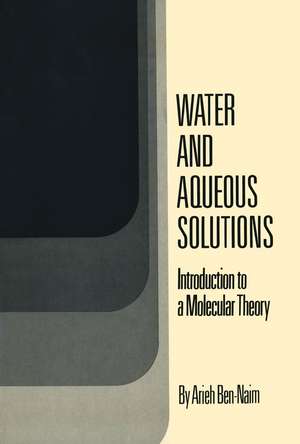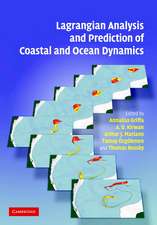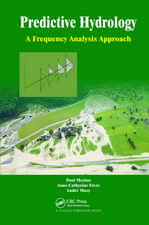Water and Aqueous Solutions: Introduction to a Molecular Theory
Autor Arieh Ben-Naimen Limba Engleză Paperback – 17 feb 2013
Preț: 399.29 lei
Nou
Puncte Express: 599
Preț estimativ în valută:
76.41€ • 82.97$ • 64.19£
76.41€ • 82.97$ • 64.19£
Carte tipărită la comandă
Livrare economică 23 aprilie-07 mai
Preluare comenzi: 021 569.72.76
Specificații
ISBN-13: 9781461587040
ISBN-10: 1461587042
Pagini: 492
Ilustrații: XVI, 474 p. 35 illus.
Dimensiuni: 155 x 235 x 26 mm
Greutate: 0.68 kg
Ediția:1974
Editura: Springer Us
Colecția Springer
Locul publicării:New York, NY, United States
ISBN-10: 1461587042
Pagini: 492
Ilustrații: XVI, 474 p. 35 illus.
Dimensiuni: 155 x 235 x 26 mm
Greutate: 0.68 kg
Ediția:1974
Editura: Springer Us
Colecția Springer
Locul publicării:New York, NY, United States
Public țintă
ResearchCuprins
1. Introduction and Prerequisites.- 1.1. Introduction.- 1.2. Notation.- 1.3. Classical Statistical Mechanics.- 1.4. Connections between Statistical Mechanics and Thermodynamics.- 1.5. Basic Distribution Functions in Classical Statistical Mechanics.- 1.6. Ideal Gas.- 1.7. Pair Potential and Pairwise Additivity.- 1.8. Virial Expansion and van der Waals Equation.- 2. Molecular Distribution Functions.- 2.1. Introduction.- 2.2. The Singlet Distribution Function.- 2.3. Pair Distribution Function.- 2.4. Pair Correlation Function.- 2.5. Features of the Radial Distribution Function.- 2.6. Further Properties of the Radial Distribution Function….- 2.7. Survey of the Methods of Evaluating g(R).- 2.8. Higher-Order Molecular Distribution Functions.- 2.9. Molecular Distribution Functions (MDF) in the Grand Canonical Ensemble.- 3. Molecular Distribution Functions and Thermodynamics.- 3.1. Introduction.- 3.2. Average Values of Pairwise Quantities.- 3.3. Internal Energy.- 3.4. The Pressure Equation.- 3.5. The Chemical Potential.- 3.6. Pseudo-Chemical Potential.- 3.7. Entropy.- 3.8. Heat Capacity.- 3.9. The Compressibility Equation.- 3.10. Local Density Fluctuations.- 3.11. The Work Required to Form a Cavity in a Fluid.- 3.12. Perturbation Theories of Liquids.- 4. Theory of Solutions.- 4.1. Introduction.- 4.2. Molecular Distribution Functions in Mixtures; Definitions.- 4.3. Molecular Distribution Functions in Mixtures; Properties.- 4.4. Mixtures of Very Similar Components.- 4.5. The Kirkwood-Buff Theory of Solutions.- 4.6. Symmetric Ideal Solutions; Necessary and Sufficient Conditions.- 4.7. Small Deviations from Symmetric Ideal (SI) Solutions.- 4.8. Dilute Ideal (DI) Solutions.- 4.9. Small Deviations from Dilute Ideal Solutions.- 4.10. A Completely Solvable Example.- 4.11. StandardThermodynamic Quantities of Transfer.- 5. Generalized Molecular Distribution Functions and the Mixture-Model Approach to Liquids.- 5.1. Introduction.- 5.2. The Singlet Generalized Molecular Distribution Function...- 5.3. Illustrative Examples of GMDF’s.- 5.4. Pair and Higher-Order GMDF’s.- 5.5. Relations between Thermodynamic Quantities and GMDF’s..- 5.6. The Mixture-Model (MM) Approach; General Considerations.- 5.7. The Mixture-Model Approach to Liquids; Classifications Based on Local Properties of the Molecules.- 5.8. General Relations between Thermodynamics and Quasi component Distribution Functions (QCDF).- 5.9. Reinterpretation of Some Thermodynamic Quantities Using the Mixture-Model Approach.- 5.10. Some Thermodynamic Identities in the Mixture-Model Approach.- 6. Liquid Water.- 6.1. Introduction.- 6.2. Survey of Properties of Water.- 6.3. The Radial Distribution Function of Water.- 6.4. Effective Pair Potential for Water.- 6.5. Virial Coefficients of Water.- 6.6. Survey of Theories of Water.- 6.7. A Prototype of an Interstitial Model for Water.- 6.8. Application of an Exact Two-Structure Model (TSM).- 6.9. Embedding ad hoc Models for Water in the General Framework of the Mixture-Model Approach.- 6.10. A Possible Definition of the “Structure of Water”.- 6.11. Waterlike Particles in Two Dimensions.- 6.12. Waterlike Particles in Three Dimensions.- 6.13. Conclusion.- 7. Water with One Simple Solute Particle.- 7.1. Introduction.- 7.2. Survey of Experimental Observations.- 7.3. “Hard” and “Soft” Parts of the Dissolution Process.- 7.4. Application of a Two-Structure Model.- 7.5. Application of an Interstitial Model.- 7.6. The Problem of Stabilization of the Structure of Water.- 7.7. Application of a Continuous Mixture-Model Approach.- 7.8. Conclusion.-8. Water with Two or More Simple Solutes. Hydrophobic Interaction (HI).- 8.1. Introduction.- 8.2. Survey of Experimental Evidence on Hydrophobic Interaction.- 8.3. Formulation of the Problem of Hydrophobic Interaction (HI).- 8.4. A Possible Connection between HI and Experimental Quantities.- 8.5. An Approximate Connection between HI and Experimental Quantities.- 8.6. Further Experimental Data on HI.- 8.7. Generalizations.- 8.8. Hydrophobic Interaction at Zero Separation.- 8.9. Hydrophobic Interaction at More Realistic Distances…..- 8.10. Entropy and Enthalpy of Hydrophobic Interaction.- 8.11. Hydrophobic Interaction and Structural Changes in the Solvent.- 8.12. Simulations.- 8.13. Conclusion.- 9. Appendix.- 9-A. Rotational Partition Function for a Rigid Asymmetric Molecule.- 9-B. Functional Derivative and Functional Taylor Expansion.- 9-C. The Ornstein-Zernike Relation.- 9-D. The Percus-Yevick Integral Equation.- 9-E. Solution of the Percus-Yevick (PY) Equation.- 9-F. The Chemical Potential in the T, P9 N Ensemble.- 9-G. The Chemical and the Pseudo-Chemical Potential in a Lattice Model.- Glossary of Abbreviations.- References.














